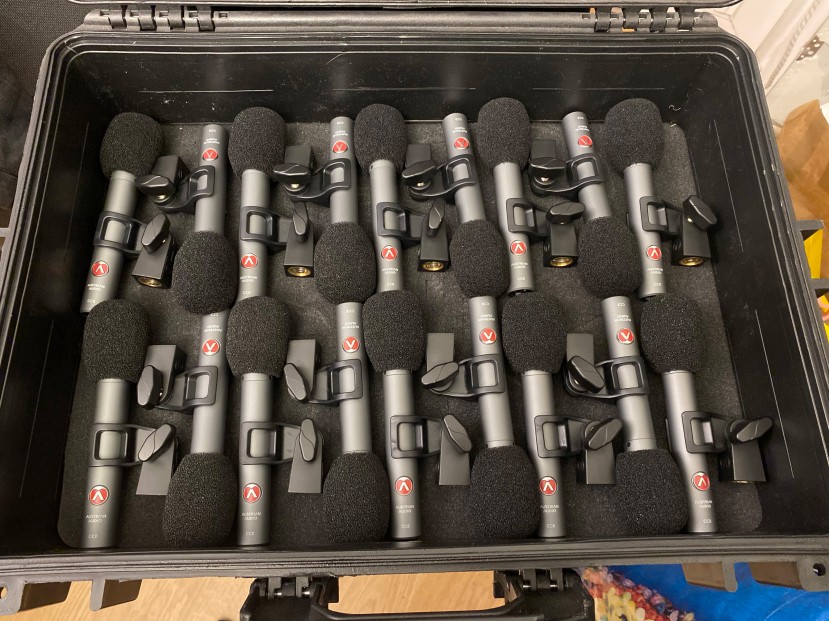
The Poznań Philharmonic Orchestra recently performed in Konin, Central Poland, featuring a line-up of over 60 players and 58 Austrian Audio microphones to capture their distinguished open-air performance.
A key element in shaping an exceptional open air symphony is the approach taken to acoustics and sound reinforcement. The sound of the orchestra needs to be amplified across a large audience area in the most natural way possible, and choosing microphones that are best suited to each instrument goes a long way in achieving this.
Microphones that are designed to perform well in a loud concert environment whilst offering accurate reproduction of detail, are often preferenced in this scenario, with Austrian Audio becoming a household name amoungst discerning symphony engineers. The Vienna-made microphones are prized for their linear frequency response, offering clarity with no artificial top-end boost. Input is captured with accuracy and precision, resulting in a smooth high-end which is able to translate the character of orchestral instruments naturally.

Radek Barczak, the event’s Music Director, expands on the concert:
“This was probably the largest sound capture with Austrian Audio microphones in the world. Producing a large symphony orchestra concert is quite an equipment challenge! Prior to the Poznań Philharmonic concert, our agency, ViolinArt, already owned an arsenal of Austrian Audio microphones: we had 16x CC8s, 4x OC818s, 4x OC18s, an OC16 and an OD5, but we couldn’t put on the concert without additional Austrian Audio mics. Thanks to the strong support of two companies- the Polish distributor ESS Audio, who quickly imported 20x CC8 microphones for us- and Mateusz Szternel’s Music Service rental company, who exchanged their 4x CC8s and 2x OC16s for our 4x Neumann KM184s and 2x AKG C314s, we were able to obtain what we needed.”

Radek explains that he prefers the more natural character of the Austrian Audio mics for symphony work, as they translate the sound very closely to how we perceive it, which is critical when being multiplied and amplified:
“Most microphones have a boosted upper band. Now imagine 60 condenser microphones on stage with a 12 line array sound system per side and double basses and cellos almost directly underneath them – and each microphone has a boosted top? Thanks to Austrian Audio mics’ natural, unhyped frequency response, there is no need for a lot of EQ and there is no need to struggle to achieve a natural violin sound, for example, by eliminating high-frequency jitter.”

The Poznań Philharmonic Orchestra performance featured 20 violins, 7 violas, 6 cellos, 4 double basses, 4 french horns, 2 flutes + piccolo, 2 oboes, 2 clarinets, 2 bassoons, 3 trumpets, 3 trombones, harp, 4 timpani, gran casa, 2 stands of percussion and snare drum. Radek chose CC8s for the entire string quintet, woodwinds and overhead percussion, OD5s on timpani and snare, OC818, OC18, and OC16 on brass, a stereo pair of OC18s over the conductor and OC18s with additional shotgun mic for the solo violin.
With this setup, all that was needed was an 80% gain match at the desk and the majority of the work was done, with no need for major EQ adjuments or any rescuing from unwanted coupling with the front pa system. Solidifying the sound of the orchestra was simply a matter of delaying signals of the individual microphones to match a stereo XY pair from an OC18 over the conductor’s head. With some reverb processing added as a final touch, the result was a full and accurate expression of the orchestra for the audience.

Austrian Audio microphones featured:
40x Austrian Audio CC8
4x Austrian Audio OC818
6x Austrian Audio OC18
4x Austrian Audio OC16
4x Austrian Audio OD5













































